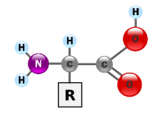
See computer science integration opportunities in K-5 science in this crosswalk of the two disciplines.
- Subject:
- Computer Science
- Science
- Material Type:
- Teaching/Learning Strategy
- Author:
- CodeVA Curriculum
- Valerie Fawley
- Date Added:
- 03/29/2023

See computer science integration opportunities in K-5 science in this crosswalk of the two disciplines.

Kindergarten Tracking Log Resource for Schools and Divisions.

Science Instructional Plans (SIPs) help teachers align instruction with the Science Standards of Learning (SOL) by providing examples of how the content and the scientific and engineering practices found in the SOL and curriculum framework can be presented to students in the classroom.

User guide

Appendix

Science Instructional Plans (SIPs) help teachers align instruction with the Science Standards of Learning (SOL) by providing examples of how the content and the scientific and engineering practices found in the SOL and curriculum framework can be presented to students in the classroom.

Science Instructional Plans (SIPs) help teachers align instruction with the Science Standards of Learning (SOL) by providing examples of how the content and the scientific and engineering practices found in the SOL and curriculum framework can be presented to students in the classroom.

VDOE resource to assist in the tracking of content in life science. This is a resource that divisions or schools may use as needed.

Science Instructional Plans (SIPs) help teachers align instruction with the Science Standards of Learning (SOL) by providing examples of how the content and the scientific and engineering practices found in the SOL and curriculum framework can be presented to students in the classroom.

Science Instructional Plans (SIPs) help teachers align instruction with the Science Standards of Learning (SOL) by providing examples of how the content and the scientific and engineering practices found in the SOL and curriculum framework can be presented to students in the classroom.

This science instructional plan (SIP) supports the Science Standards of Learning.

Carbon and other elements play a key role in determining the structure and function of macromolecules needed to sustain life processes. Life processes include growth and repair, reproduction, gas exchange, metabolism, and response. Cells make a variety of macromolecules needed for life processes from a relatively small set of monomers. These macromolecules include carbohydrates, proteins, nucleic acids, and lipids. This module was developed by Kristin Scheible as part of a Virginia Commonwealth University STEM initiative sponsored by the Virginia Department of Education.

This is a booklet containing 37 space science mathematical problems, several of which use authentic science data. The problems involve math skills such as unit conversions, geometry, trigonometry, algebra, graph analysis, vectors, scientific notation, and many others. Learners will use mathematics to explore science topics related to Earth's magnetic field, space weather, the Sun, and other related concepts. This booklet can be found on the Space Math@NASA website.

Science Instructional Plans (SIPs) help teachers align instruction with the Science Standards of Learning (SOL) by providing examples of how the content and the scientific and engineering practices found in the SOL and curriculum framework can be presented to students in the classroom.

Science Instructional Plans (SIPs) help teachers align instruction with the Science Standards of Learning (SOL) by providing examples of how the content and the scientific and engineering practices found in the SOL and curriculum framework can be presented to students in the classroom.

Description: Magnetic Max loves magnets so much, he decided to work for a roofing company, using his electromagnets to pick up nails for roofers when they are done with a roofing job. But, he needs your help. Max’s tool is too weak, and he needs you to create a model of a tool that can pick up the largest amount of nails in 10 seconds. He has to be able to pick up the nails, and then be able to release the nails and put them in a bucket for disposal.

As 5th grade students are learning about matter in science, these comprehension “mix-ups” are a great way to monitor students’ understanding of the content along with checking reading comprehension.

Sample common Science Investigation Rubric for middle school performance tasks and assessments.

Science Instructional Plans (SIPs) help teachers align instruction with the Science Standards of Learning (SOL) by providing examples of how the content and the scientific and engineering practices found in the SOL and curriculum framework can be presented to students in the classroom.

Science Instructional Plans (SIPs) help teachers align instruction with the Science Standards of Learning (SOL) by providing examples of how the content and the scientific and engineering practices found in the SOL and curriculum framework can be presented to students in the classroom.